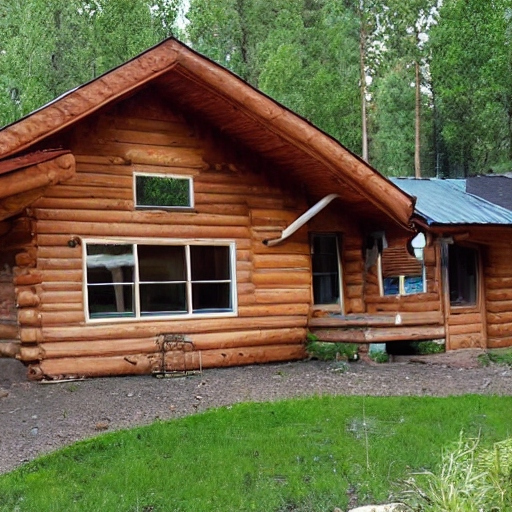.jpg)
House flipping is a popular real estate investment strategy where investors purchase properties, renovate them, and then sell them for a profit.
One key rule that house flippers often use is the 70% rule, which helps them determine the maximum purchase price for a property in order to make a profit.
In this article, we will explore what the 70% rule is, how it is calculated, its pros and cons, and alternative rules that can be used in house flipping.
Let’s dive in to learn more about this important tool for successful house flipping.
What is House Flipping?
House flipping is a common real estate investment strategy where investors purchase properties, renovate them to increase their market value, and then sell them for a profit.
This process involves a keen eye for properties with potential, a thorough understanding of market trends, and strategic decision-making in terms of renovations and upgrades. Successful house flippers conduct detailed market analysis to ensure they’re investing in areas with high demand and value appreciation potential.
Renovating a property for house flipping requires a delicate balance between increasing the property’s appeal and keeping costs under control to maximize profit margins. Key factors to consider include the scope of renovations, budget allocation, timelines, and hiring skilled contractors to execute the vision effectively.
What is the 70% Rule in House Flipping?
The 70% rule in house flipping is a guideline used by investors to determine the maximum purchase price for a property based on its after repair value (ARV) and estimated renovation costs.
By following this rule, investors aim to ensure they have a margin of safety built into their calculations, allowing for unexpected expenses or market fluctuations. Calculating the ARV accurately is crucial in this formula, as it forms the basis for the entire investment decision.
Understanding the market trends, property values in the area, and potential resale value post-renovation are key factors that contribute to a successful application of the 70% rule. Negotiation skills also play a vital role in securing a deal within this framework, allowing for a profitable flip while mitigating risks.
How is the 70% Rule Calculated?
Calculating the 70% rule involves determining the ARV of the property, subtracting the estimated renovation costs, and then applying the formula to arrive at the maximum allowable purchase price.
Once you have identified the After Repair Value (ARV) through market analysis or by consulting real estate professionals, the next step is to factor in the renovation costs. Renovation costs typically include expenses for materials, labor, permits, and any other associated costs. Subtracting these renovation costs from the ARV provides you with the maximum amount you can spend on purchasing the property while still leaving room for profit. This calculated figure helps ensure that you maintain a sufficient equity position in the property to mitigate risks and enhance potential returns.
What is the Purpose of the 70% Rule?
The primary purpose of the 70% rule is to help investors mitigate risks, ensure a positive return on investment, and maintain a strategic approach to property flipping.
By adhering to this rule, investors are encouraged to conduct thorough property assessments, considering potential renovation costs, market fluctuations, and the overall investment landscape. This critical evaluation process allows investors to make informed decisions, minimizing the chances of overpaying for a property and maximizing potential profits.
The 70% rule serves as a guiding principle for investors to negotiate effectively, streamline their investment portfolios, and create a sustainable real estate investment strategy focused on achieving optimal ROI.
How to Use the 70% Rule in House Flipping?
Utilizing the 70% rule in house flipping involves determining the property’s ARV, calculating repair costs accurately, and negotiating the maximum allowable offer (MAO) within the set budget.
To establish the After Repair Value (ARV), one can begin by conducting thorough market research to assess comparable properties in the area. Once you have a clear picture of the potential selling price post-renovation, it’s time to factor in the repair costs. This involves obtaining detailed estimates from contractors or utilizing resources like a repair cost calculator to ensure accuracy. Calculating the MAO entails deducting the total repair costs and desired profit margin from the ARV.
When entering negotiations with sellers, it is crucial to present your case confidently, highlighting the justified MAO and being prepared to walk away if the terms do not align with your budgeting goals.
Determine the After Repair Value (ARV)
Determining the After Repair Value (ARV) involves assessing the property’s current market value, estimating renovation impact, and conducting a thorough market analysis to gauge potential returns.
During the process of evaluating ARV, it is crucial to analyze recent property sales in the area, consider the cost of necessary repairs and upgrades, and factor in the potential for future market growth. Property appraisals play a key role in this assessment, as they provide a detailed evaluation of the property’s condition, features, and overall worth. Market trends such as supply and demand dynamics, economic conditions, and demographic shifts must be carefully analyzed to make accurate predictions about the property’s value.
Calculate the Repair Costs
Calculating repair costs requires a detailed analysis of necessary expenses, budgeting for renovations, and prioritizing home improvements that enhance the property’s resale value.
Accurate repair cost estimation is crucial for any homeowner looking to upgrade their property while staying within a reasonable budget. By carefully assessing the needed repairs and allocating funds accordingly, individuals can avoid overspending and make the most out of their renovation budget.
One valuable tip for budget allocation is to set aside a contingency fund for unexpected expenses that may arise during the rehab process. This can help prevent financial strain and ensure that the project stays on track. Investing in strategic home improvements not only enhances the overall aesthetics and functionality of the property but also significantly boosts its market value.
Calculate the Maximum Allowable Offer (MAO)
Calculating the Maximum Allowable Offer (MAO) involves factoring in all expenses, considering market conditions, and strategically pricing the offer to maximize investment opportunities.
Understanding the impact of market conditions is pivotal in devising effective pricing strategies. Fluctuations in supply and demand, as well as current interest rates and economic indicators, play a significant role in determining the final offer price.
Negotiation techniques come into play during the deal-making process. Skillful negotiation can result in advantageous terms and better overall returns on the investment.
Keeping abreast of market trends and being able to adapt swiftly to changing dynamics can set investors apart in the competitive real estate landscape.
What are the Pros and Cons of Using the 70% Rule in House Flipping?
Applying the 70% rule in house flipping offers advantages such as risk mitigation, higher ROI potential, and improved property evaluation accuracy, but it may also limit funding options and success rates.
One of the key benefits of utilizing the 70% rule in real estate investing is that it helps investors assess deals more carefully and reduces the chances of making costly mistakes. By sticking to the guidelines, investors can avoid overpaying for properties and ensure that their investments are more likely to yield profitable returns. The rule acts as a useful tool for managing risks effectively by setting clear boundaries on how much to invest in a property, thereby safeguarding against potential losses.
A potential drawback of adhering strictly to the 70% rule is that it can sometimes restrict funding options since it typically involves putting a larger down payment and relying more on personal capital. This limitation may pose challenges, especially for newer investors or those with limited access to funds. While the rule aids in enhancing property evaluation accuracy by establishing a systematic approach to determining the maximum purchase price based on repair costs and desired profit margins, it may also lead to missed opportunities or decreased success rates in highly competitive markets where quick decisions and flexible financing are essential for securing deals.
Pros:
The 70% rule offers numerous benefits such as increased equity, higher property value post-renovation, and enhanced market research capabilities, empowering investors to make informed decisions.
By adhering to this rule, investors can optimize their renovation budgets, ensuring that they allocate resources effectively to maximize property value growth. This strategic approach not only enhances the overall equity in the property but also contributes to the appreciation of surrounding real estate values. The systematic application of the 70% rule provides investors with valuable market insights, enabling them to identify lucrative opportunities and make sound investment decisions based on comprehensive market analysis.
Cons:
Despite its benefits, the 70% rule poses challenges such as restrictive funding options, potential calculation errors leading to mistakes in property flipping, and variations in success rates based on market conditions.
One of the major drawbacks of the 70% rule is that it can limit the funding options available for investors, especially those looking to leverage higher amounts for property acquisitions. This restriction on funding can sometimes lead to missed opportunities or delays in securing deals. The reliance on precise calculations under this rule can pose a risk of errors, which in turn may result in overpaying for properties or underestimating renovation costs. Market fluctuations further complicate matters, affecting the success rates of investments made following this rule.
What are the Alternatives to the 70% Rule in House Flipping?
In addition to the 70% rule, alternative strategies like the 65% rule, 1% rule, and 50% rule offer different approaches to pricing properties, each with its own set of best practices and considerations.
These alternative house-flipping rules provide investors with additional tools to analyze potential properties and ensure profitable deals. The 65% rule, for instance, suggests that an investor should not pay more than 65% of the after-repair value (ARV) minus repair costs for a property. On the other hand, the 1% rule indicates that the monthly rental income should be at least 1% of the purchase price. Meanwhile, the 50% rule advises that half of the potential rental income should go towards property expenses, including maintenance and vacancies. Understanding and implementing these rules can help investors make informed decisions and maximize their returns in the competitive real estate market.
The 65% Rule
The 65% rule in house flipping emphasizes stricter cost control and lower investment thresholds, requiring a comprehensive financial analysis, market trend assessment, and effective risk management strategies.
This principle serves as a fundamental guideline for property investors to ensure profitability and mitigate potential risks. By adhering to this rule, investors are prompted to thoroughly analyze all expenses involved in a flip project, including acquisition costs, renovation expenses, holding costs, and the projected selling price. Incorporating the 65% rule aids in determining realistic profit margins and avoiding over-leveraging, which is crucial for safeguarding financial health and stability in the dynamic real estate market. It also encourages a disciplined approach to decision-making, fostering a more strategic and calculated investment process.
The 1% Rule
The 1% rule focuses on generating consistent cash flow from rental properties, aligning with a long-term investment strategy that prioritizes property flipping success through effective market techniques and sustainable income streams.
By following this rule, investors ensure that their rental income exceeds 1% of the property’s total cost, thus guaranteeing a positive cash flow. This approach not only emphasizes immediate returns but also sets the foundation for sustainable income over time. Implementing smart market techniques, such as strategic property selection and timely renovations, becomes instrumental in maximizing profits and enhancing property value. Ultimately, the 1% rule serves as a guiding principle for investors looking to build a successful and resilient real estate portfolio.
The 50% Rule
The 50% rule dictates that half of the property’s income should cover expenses, including mortgage, property taxes, and insurance, ensuring a balanced return percentage, property value appreciation, and consideration of market conditions.
This principle plays a crucial role in property appraisal, as it aids investors in evaluating the financial viability of a potential investment. By adhering to this rule, investors can gauge the sustainability of returns and estimate the property’s future value growth.
When applying the 50% rule, funding considerations also come into play, influencing the decision-making process. Market analysis becomes essential to assess the demand-supply dynamics and rental trends, further shaping the property’s performance in the market.
Frequently Asked Questions
What is the house flipper 70% rule?
The house flipper 70% rule is a general guideline used by real estate investors to determine the maximum purchase price of a property they plan to flip.
How does the house flipper 70% rule work?
According to the rule, an investor should not pay more than 70% of the after repair value (ARV) of a property, minus the cost of repairs. This ensures a profitable flip.
Why is the house flipper 70% rule important?
The rule helps an investor avoid overpaying for a property and ensures a good return on investment. It also takes into account potential repair costs and market fluctuations.
Is the house flipper 70% rule always accurate?
No, the 70% rule is a general guideline and may not apply to every property or market. It’s important to conduct thorough research and analysis before making any investment decisions.
Can the house flipper 70% rule be adjusted?
Yes, some investors may choose to use a different percentage, such as 75% or 80%, depending on their individual risk tolerance and market conditions. However, it’s important to be cautious and not deviate too far from the rule.
Are there any exceptions to the house flipper 70% rule?
There may be exceptions to the rule, such as a highly desirable property or a hot market, where an investor may be willing to pay more than 70% of the ARV. However, it’s important to carefully weigh the risks and potential returns before deviating from the rule.














































You must be logged in to post a comment.